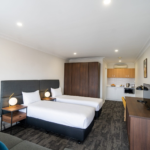In the fast-evolving world of LED lighting, much of the attention often goes to the final glow, the color temperature, brightness, or sleek design of the fixture. But behind every impressive lighting setup is a carefully integrated system of components that make it all possible. Among these, power supplies and LED modules serve as the foundation. For anyone involved in lighting projects whether it’s commercial signage or architectural displays, understanding the source of these components is just as important as the end result.
The Hidden Importance of LED Power Supplies
LEDs are efficient by nature, but they can’t function without the right driving force behind them. That’s where LED power supplies come in. These components regulate the current and voltage delivered to the LEDs, ensuring they operate safely and consistently. Whether you’re working with strip lights, modules, or panels, the power supply plays a defining role in overall performance.
A reliable power supply prevents flickering, extends the life of the LED chips, and protects the system from overload. Inconsistent voltage or inadequate power delivery can not only affect the brightness but also pose long-term risks to the entire lighting setup. This is especially crucial in outdoor or industrial environments, where fluctuations in conditions are more common.
What Defines a Good LED Power Supply Manufacturer?
Manufacturing these units is about more than putting together circuits and housings. A dependable LED Power Supply manufacturer prioritizes precision engineering, safety compliance, and environmental durability. For example, waterproofing and heat dissipation aren’t just technical features, they’re essential for real-world applications like outdoor signage or high-heat environments.
Modern manufacturers invest in testing and quality control, ensuring that each unit meets global standards. This attention to detail not only supports longer-lasting products but also helps integrators avoid costly failures down the line. When the power source is stable and efficient, the entire LED system runs smoother and more reliably.
LED Modules: Flexible, Functional, and Foundational
While power supplies handle the electrical side of things, LED modules serve as the light source itself, compact, versatile, and easily customized. These modules are used in a wide range of applications: channel letters, backlit signs, display cases, and even smart lighting systems.
What makes LED modules stand out is their adaptability. They can be designed to emit light in specific directions, support various color temperatures, or operate in unique spaces that traditional bulbs simply can’t fit. The shape, number of LEDs per module, beam angle, and mounting design all vary depending on the need. This level of customization is what makes modules such an attractive option for designers and engineers alike.
Global Reach and Reliability: LED Module Suppliers in Focus
Choosing the right components isn’t just about technical specs, it’s also about the logistics of getting what you need, when you need it. Professional buyers and project managers often work with LED Module suppliers who understand the urgency and complexity of bulk orders.
These suppliers play a crucial role in ensuring that inventory is available, product standards are consistent, and certifications are up to date. With the growing demand for energy-efficient lighting, the supply chain must keep pace. Many suppliers are now offering flexible batch options, fast shipping, and technical support to meet the diverse needs of their clients.
For projects that span continents or require a quick turnaround, having access to a reliable module supplier makes all the difference.
Compatibility Between Components Is Everything
Even the best LED power supply or module won’t deliver ideal performance if they aren’t compatible. Mismatched voltages, current ratings, or connection interfaces can create inefficiencies or outright system failures. This is why a systems-based approach to LED sourcing is becoming more common.
Manufacturers and suppliers alike are working more closely to align their products. From shared datasheets to universal connectors, the goal is to simplify integration for installers and engineers. When the power supply and modules are designed to work together, not only is setup easier, but the entire system becomes more robust and energy-efficient.
This synergy also makes troubleshooting simpler. If something goes wrong, having components that come from experienced, reputable sources shortens the diagnostic process and reduces downtime.
Conclusion
In the race to build cost-effective and high-impact LED systems, it’s easy to focus on the end result of the lights themselves. But taking the time to understand the components behind the glow, like power supplies and modules, is what separates short-term fixes from lasting solutions.
Whether you’re sourcing from a LED Power Supply manufacturer or collaborating with trusted LED Module suppliers, the key is to look beyond surface-level specs. Quality, compatibility, and supplier reliability all play a role in ensuring your project not only works but works well for years to come.














+ There are no comments
Add yours